Asian Actors In Hollywood: Increased Roles Mark Industry Sea Change

Asian-American actors and those representing them are experiencing a sea change in the number of roles available to them. The revolution is happening in a segment of the acting population that has been widely underserved for years, they say. Perhaps it is the concerted effort on the part of the networks and film studios, the writers who are growing up with a different perspective, and the influx of international money into the marketplace, but several people interviewed by Deadline noted a marked change in the past year.

One of those actors who has seen a significant shift is Will Yun Lee, who is of Chinese-Korean descent. “I’ve definitely seen a big change in the landscape,” he said. “I started in 1997 when there were only three to four jobs that were meaningful to put food on the table, which if you didn’t get, you had to keep your day job,” he said. His was as a taekwondo instructor. “It’s truly been this year in pilot season that you started seeing the breakdowns open to all ethnicities. All the major roles seem to be really open to all. I don’t know if it’s the influx of the Chinese money or younger writers who grew up in a different way. To me, it’s really interesting to see the shift. To do the roles that weren’t originally thought of as being Asian is really great.”
Lee has so far had a dominating year. He was the villain in the Cinemax series Strike Back, starring opposite Michelle Yeoh. His other recent credits include San Andreas with Dwayne “The Rock” Johnson, HBO’s True Blood and a major role of Harada in Fox’s The Wolverine. He’s also in the two-hour USA drama pilot Falling Water from director Juan Carlos Fresnadillo.
By having more minority actors on the rise, new role models are created, giving hope to others. For Lee, seeing one particular Asian actor on the big screen changed his life. “Denzel Washington and Sean Penn were my role models up until Jason Scott Lee,” he said. “It wasn’t until he came on the scene that I actually identified with someone in a period of what I grew up with. He was the reason that I moved to L.A., and he is the reason I thought I could do that. I don’t think without seeing him on screen I would have had the guts to move to L.A.”
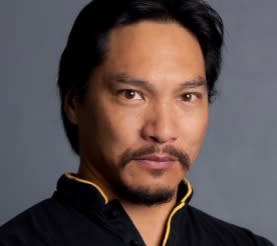
Jason Scott Lee came to Hollywood in the mid- to late 1980s, when roles for Asian-Americans were relegated to refugees and stories related directly to the Vietnam War and conflicts in Cambodia and immigration.
“Because of my multi-ethnic look, I had been able to eke my way into multi-ethnic roles,” he said. “I am Chinese-Hawaiian. So back then there were bit roles, and you were lucky if you got a guest-starring role.” His big break came in the 1992 indie film Map Of The Human Heart, when Miramax was just a fledgling company. He played an Eskimo and was a romantic lead in the film. “That particular film opened up my eyes to a global environment of filmmaking,” he said. “The financiers were English, French, U.S., Japanese and Canadian. All crew and cast were multi-racial because it took place in the Arctic. We had a mix of cultures.”
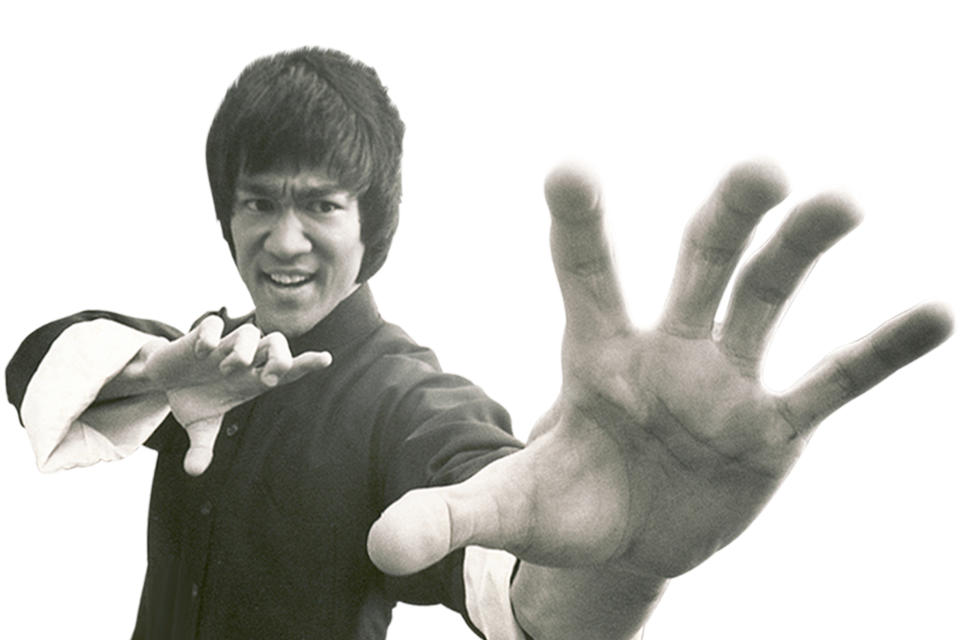
What happened next for Jason Scott Lee was life-changing — but short-lived. He was chosen by director Rob Cohen and casting agent Bonnie Timmermann to play the lead in Dragon: The Bruce Lee Story, the biopic about the legendary Hong Kong-American martial artist who was a role model for so many kids in the U.S. and around the globe. “I grew up in Hawaii, where Asians were the majority, and then went to the U.S. [mainland], where I become the minority. And so I took odd jobs while I tried to get acting jobs. For a long period, though — in the late 1990s through the 2000s — there were literally no roles. I read a lot of stuff and they really wanted a Jean-Claude Van Damme and Steven Seagal, but I wanted more diversity.”
So Lee went back to Hawaii for a while and started a farm, which he had always wanted to do. He did that for nearly 20 years before he would try Hollywood again. “I just started getting back into the business after a lull of about 15 to 17 years. Now, the roles are much more encouraging. There is a better understanding of culture because of travel and food and the Internet. I’m sure I don’t get as many opportunities as a Caucasian person; I worked with a kid who is auditioning all the time, and we still don’t get as much. But there is a leading Asian on a dramatic show now with Daniel Wu (AMC’s upcoming Into The Badlands). It seems like the studios always want to play it safe. They don’t like taking risks. Most of what I see, I still see ‘Asian Actor,’ but there is a welcoming committee for ethnic diversity. It’s cool now.”
To show how far the networks have come, the reboot of CBS’ Hawaii Five-0 now has many more Asian actors in its cast than the original show that ran from 1968-1980. It is much more representative of Hawaii. Will Yun Lee has a recurring role on that show as well.
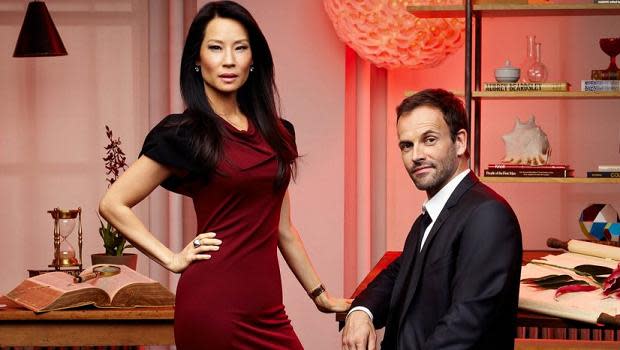
One female manager agrees with Jason Scott Lee, saying: “Producers and studios are now trying to avoid the stereotypes in casting from the nerdy geek to martial artist. It is no longer those smaller roles. One of the hardest things to do is to see a role meant for a Caucasian actor and then turn it around and convince them to employ an Asian actor. It’s not unlike trying to turn a male role into a female role, but it can be done.”
There have been a few studies. According to an annual report on television diversity from GLAAD, the number of Asian-Pacific Islanders on network television had been on the rise for many years; the group found that for the 2013-2014 television season, 6% of broadcast series regular characters were API, but it warned that the following season was showing a decline.
Five years ago, SAG’s API report noted, “Given the significant and growing consumer market of the API demographic, there are disproportionately fewer stories and roles in film and television.” That 2010 report took note of consumer spending trends and the high disposable income of APIs.
Because the opportunities for Asian actors have been underserved for so long, it seems like an explosion of roles to some. But then again, diversity has, in general, been embraced by Hollywood, said Marc Hirschfield, head of casting at NBC. It’s happening for African Americans with Black-ish, the ratings success of Empire, Power on Starz, How To Get Away With Murder on ABC, not to mention Scandal.

“Now we have all these diverse leads in shows and the audiences are embracing it,” Hirschfield said. “Networks aren’t stupid. They are now developing shows with Asians, Latinos and African-Americans. It started 15 years ago with a coalition which represented diverse actors that would present the raw numbers of how badly or great they were doing,” he said. “It’s taken 15 years, but it’s finally taken hold.”
The networks each year hold diversity showcases where talent is seen and often signed. ABC has a talent showcase; NBC has stand-up comedy showcases in L.A. and New York; CBS has a diversity comedy showcase for directors, writers and primarily actors of color in various venues for casting directors, executives, and reps to come to see new talent.
The evolution happened over years — first with key co-starring roles on such popular shows as Lost, Grey’s Anatomy, Glee and Community, and then it developed into leads in such shows like the CW’s Nikita, CBS’ Stalker and ABC’s Selfie with another — CBS’ high-profile Rush Hour — on the horizon.
The industry overall “has absolutely changed,” said Dan Mayeda, co-chair of the Asian Pacific American Media Coalition. Mayeda also pointed to the number of diverse shows on the air. “What’s happening now is the direct result of years of advocacy work by our organization and other multi-ethnic coalitions in approaching television networks and advocating for change.”
Hirschfield mentio
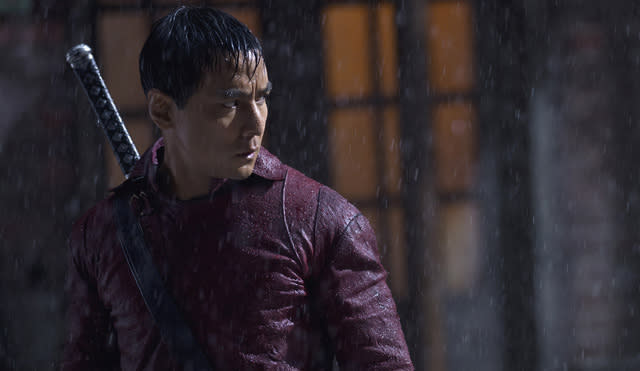
ns a number of shows that illustrate the growing opportunities for Asian actors as well. Television now has ABC’s Fresh Off The Boat (which is American-centric) and upcoming comedy Dr. Ken (starring Ken Jong) and Marco Polo on Netflix (which streams internationally). AMC this year cast Wu as the lead in Into the Badlands, which has a big martial arts component and an international scope. Elementary star Lucy Liu also has an international appeal.
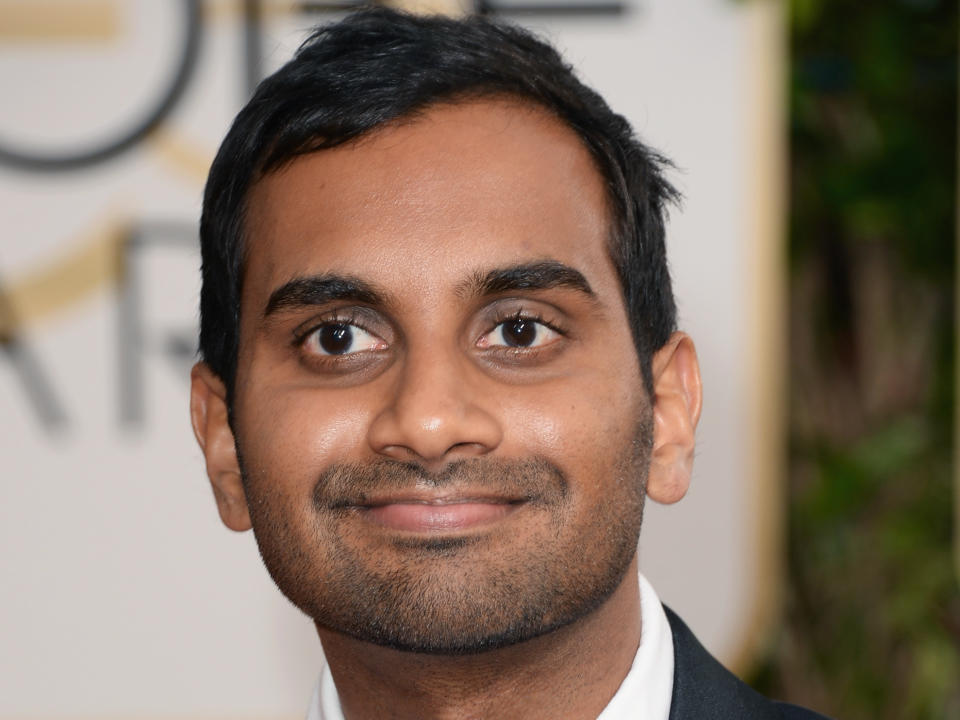
In addition, there is The Mindy Project with Mindy Kaling, and Aziz Ansari enjoyed a lead role in Parks And Recreation before landing his own Netflix comedy series (which he co-created) with Parks And Rec producer-writer Alan Yang.
In fact, Fresh Off The Boat was such a game-changer this past season — it was the first family comedy with an Asian cast on American television — that its success influenced the network to order Dr. Ken, another comedy series with a predominantly Asian cast.
For the Asian-American market, Mayeda says: “We have told (networks and studios) for years, ‘If you build it, we will come.’ Film is different and certainly a bigger challenge than the TV networks.”
A study from USC’s Annenberg School of Journalism and Communication, titled “Inequality in 700 Popular Films: Examining Portrayals of Gender, Race & LGBT Status from 2007 to 2014,” examined the 100 top-grossing films each year, from plot lines to casting and directing, with an emphasis on speaking roles. What they found in film — which was pegged an ‘epidemic of invisibility’ — were 17 films with no African-American actors and more than 40 with no Asians, and none with a transgender character. (Leave it to TV: On USA’s Mr. Robot, B.D. Wong plays a transgender hacker). In addition, only 21 films featured a female lead or co-lead. When the study was released last month, Stacy Smith, author of the report, said, “When over 40 films [out of 100] have no Asian characters, we have a problem.”

One of the film genres that Asian actors are employed well in is in the animated space, says Mayeda, pointing to Futurama, Airbender and this year’s Animated Feature Oscar winner Big Hero 6 from Disney. There’s also the Kung Fu Panda franchise, whose third film hits theaters in January.
Perhaps studios only need to look at that all-important social media imprint to understand the power of Asian-Americans. “With the networks, what has happened is last year was a breakthrough year because the shows that featured people of color and discussed issues of color were huge successes,” said Mayeda. “Empire demonstrated the power of black Twitter.” (Empire has a Facebook reach of 10.8M and Twitter’s total following is 6.1M.) “Similarly,” he added, “we’ve been saying for years now that Asian-Americans are more tuned in to social media.”
According to Mayeda, Asian-Americans use four times more tweets than Caucasians per capita and are “extremely plugged in to Instagram, Facebook and other social media. So if shows would include Asian-Americans, we would use social media to promote these shows.”
Many of those interviewed for this story said this pilot season was the tipping point for people of other ethnicities. “The change is in the scripts themselves and in the characters themselves,” said J.C. Cantu, a casting director for 12 years. “I think the world wants to see more of themselves represented on the screen, and movies and TV have responded to that. I love the direction it’s going.”
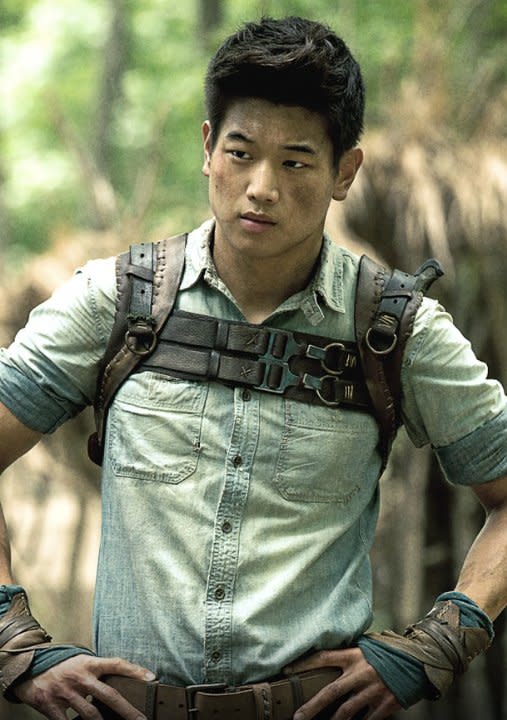
There are castings for the big screen to point to, despite that USC study. For instance, the casting of Sung Kang in Universal’s Furious franchise films or Ki Hong Lee in one of the leads in The Maze Runner — what is now a Fox film franchise. The YA novel by James Dashner had a character named Minho in its pages. “We certainly understood that the character was likely envisioned as Asian,” said Lee Stollman, one of the producers of the film. “When we began casting the film, we set out to have a very racially diverse cast. And you can look at the cast in the first two movies of the franchise and see that. We live in a racially diverse world and we want to reflect that.”
Ki Hong, whose English is perfect, also has a recurring guest star role as the love interest of a Caucasian female in the Emmy-nominated Netflix series Unbreakable Kimmy Schmidt where he portrays a Vietnamese man and puts on the accent. Interestingly, there doesn’t seem to be controversy among Asian actors in moving between culture-specific roles. One rep mused, “It doesn’t seem to matter because there is no historical accuracy that needs to be portrayed. It matters, of course, when there is.”
When Aloha writer-director Cameron Crowe cast Emma Stone in a role described as a woman who is a quarter Hawaiian and a quarter Chinese, he got all kinds of flak. The name of her character was Allison Ng. Many Native Hawaiian, Asian-American and Pacific Islanders were employed in the film, but the director ended up writing a mea cupla for offending people with his choice of casting.
Twenty-five years ago, Actors’ Equity refused to allow Jonathan Pryce to play a Eurasian character in the Broadway production of Miss Saigon when it moved from London to New York. Both John Malkovich and Charlton Heston threatened to leave the union (in fact, Heston did). Pryce ended up not only playing the role but won a Tony for his stellar performance.
With the exception of specific historical accuracy, there is little controversy among Asian actors about which actor gets the role. Mayeda is also on the board of East West Players, an Asian-American theater organization launched in 1965, in part, to address the problem of the lack of roles in television and film. “Our view, and I think it’s generally shared in the acting community, is that if the role is Asian-American any Asian could play that role,” he said. “There are times when it is important to find that specific ethnicity, like you said, in historical context.”
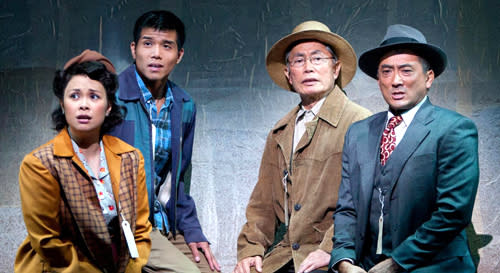
In Allegiance, George Takei’s play about his family’s uprooting to the Heart Mountain internment camp in Wyoming (the same camp where my brother-in-law’s family was interned), while largely a Japanese-American cast, other Asian-Americans also are in the play. Tony winner Lea Salonga (Miss Saigon), who is Filipino, and Takei star in the musical that opens on Broadway in the fall.
In the case of relative newcomer Ki Hong Lee, Maze Runner franchise producer Wyck Godfrey credits casting director Denise Chamian for finding him. “I think the sky’s the limit for him,” Godfrey said. “He has the innate charisma that you look for in any movie star.” He also notes that there is a growing Korean-American audience in the U.S. and pointed to the growth of the Korean film market itself.
While the international footprint of every star is considered when financing a film, one producer said that with the influx of foreign financing, they are going after the biggest star in a particular territory to package into their films so that when the film arrives in — say South Korea — the local audience will be even more excited to see that film. To that point, Will Yun Lee has a starring role in the feature film Make Your Move (aka Cobu) opposite actress singer-actress BoA, who is considered one of Korea’s biggest stars.
“The networks, the film studios, the digital realm are realizing that the world went global and we need to have who are watching see themselves looking back at them,” said a 35-year veteran of the talent agency business. “Fortunately, now the world is changing rapidly because of the Internet, and everything is in your face in seconds. It’s a great time to be a terrific actor with talent who just so happens to be ethnic.”
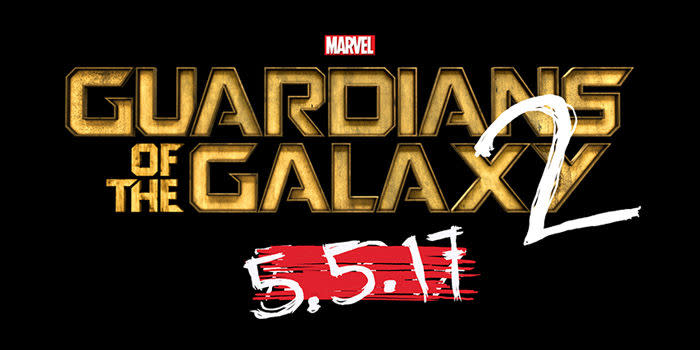
To that end, Marvel Studios is said to be looking for an Asian actor to cast in the next installment of Guardians Of The Galaxy, set for 2017.
And East West Players’ Tim Dang recently laid out the coming demos in a report called “51%,” which is also asking the legit theater industry to embrace the change that is happening in the world by adding more people of color, more women, and those under 35. Using a combination of stats from CNN as well as the U.S. Census Bureau, the report notes that by 2023 — only eight years — more than 50% of American children under 18 will be youth of color, and in 2042, the majority of Americans will be people of color.
The film industry has been slower to follow, but the networks are and continue to make changes toward diversity.
“It’s been incredible to watch the change that is happening,” said Zero Gravity’s Mark Holder. “Every year, we looked at the pilot season and would really have to think about where we could put our actors and then push to get them. This year, the roles were already written that way, and that is the change that I see. It went from no roles, to ‘token’ roles to roles written for an Asian actor, and I think there is another level that is left to hit — one that is not stereotypical and the best actor gets the role no matter who he or she is. Because all anyone wants is a fair shot.”
Yes, indeed.
Related stories
How Martial Arts Series 'Into the Badlands' Kicked Its Way Onto AMC; Debuts Nov. 15 - TCA
Daniel Wu To Star In AMC Martial Arts Drama Series 'Badlands'
The Horse's Mouth 6: 'Because Your Mother Named You Marvin'
Get more from Deadline.com: Follow us on Twitter, Facebook, Newsletter

